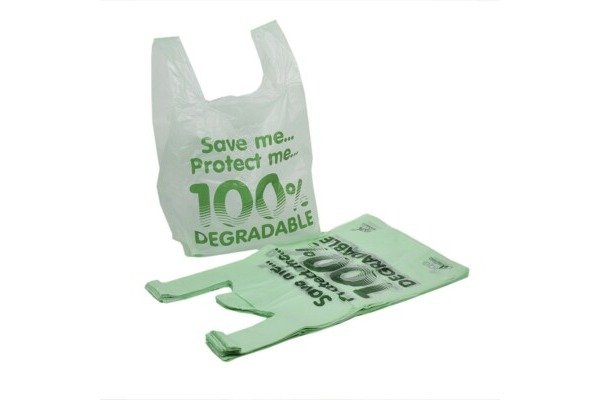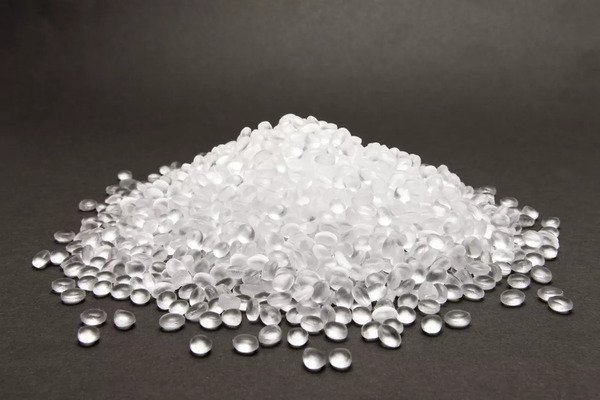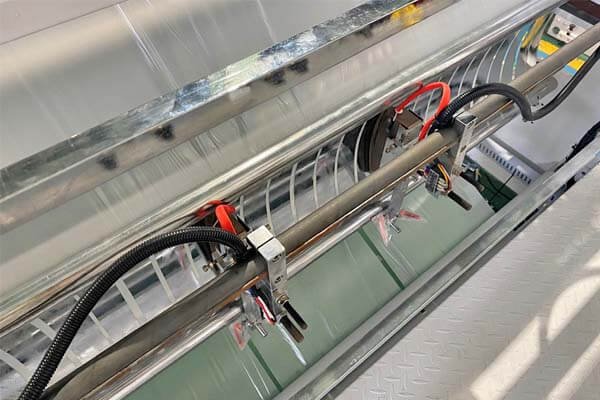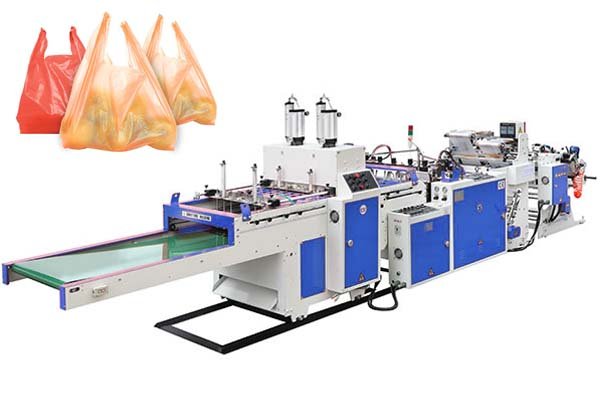
Are you looking for a stable and profitable sector in the packaging industry? You might overlook massive opportunities in everyday items. The garbage bag market1 is a perfect example of this hidden potential.
The global garbage bag market was valued at over $10.9 billion in 2022. It is expected to grow steadily, reaching nearly $15.5 billion by 2030. This shows a strong and consistent demand you can build a business on.
This impressive growth isn't a surprise. Several key factors are driving it. First, as cities grow, more people live in smaller areas, which creates more household waste. Second, there is a global push for better hygiene and sanitation, especially after the pandemic. People and businesses are more focused on clean waste disposal. And finally, governments around the world are creating stricter rules for waste management. This means proper trash bags are not just a choice but a necessity. At BagMec®, we provide the machinery that helps businesses meet this rising demand.
We see these trends firsthand. Our clients come to us to build production lines that serve this exact market. For example, a growing city needs more bags for its residents. A hospital needs reliable bags for sanitary disposal. A new environmental law requires stronger, more leak-proof bags. These are the real-world needs that are making the garbage bag market so large and dependable. Our job is to give you the tools to meet those needs efficiently.
What are the key trends shaping the garbage bag market?
It is good to know the market is big. But what is actually happening inside it? Understanding the trends is key to finding your spot. Let's look at what is most important right now.
The most significant trends are the shift to eco-friendly materials2 like biodegradable and recycled plastics. Also, consumers want premium features3 like drawstrings, odor control, and extra strength for different kinds of waste, creating new market segments.

The Rise of Sustainable and Eco-Friendly Bags
The biggest change in our industry is the demand for "green" products. Consumers are more aware of plastic waste. They actively choose products that are better for the environment. Governments are also passing laws that favor sustainable options. This is not just a trend; it is the new standard.
At BagMec®, we work closely with companies leading this charge. For example, we co-developed a machine for a U.S. Eco-Brand that wanted to produce 100% compostable shopping bags. Our machines are designed to handle new materials like:
- PLA (Polylactic Acid): A plastic made from plant sources like cornstarch. It breaks down into natural elements.
- PBAT (Polybutylene Adipate Terephthalate): Another biodegradable polymer that adds flexibility.
- Recycled Plastics (rPE): Using old plastic to make new bags reduces waste and saves resources.
Our machines, equipped with features like "Smart Tension Control," handle these newer, sometimes trickier, materials with the same precision as traditional plastics.
Innovation in Bag Features and Functionality
Garbage bags are no longer just simple plastic sacks. Customers now expect more. They want convenience, strength, and a better user experience. This has opened up a market for premium bags with value-added features. This is a great opportunity for producers to stand out and earn higher margins.
Here’s a simple breakdown of how bags have evolved:
| Feature | Standard Bag (The Old Way) | Premium Bag (The New Demand) | Why It Matters |
|---|---|---|---|
| Closure | Basic open top, requires a twist tie | Integrated drawstring or flap ties | Easy and clean closure, better user experience. |
| Material | Thin, basic HDPE/LDPE film | Multi-layer film, added flex agents | Prevents leaks, rips, and punctures. |
| Odor Control | None | Scented plastic or carbon-filter layers | Manages kitchen and bathroom odors effectively. |
| Eco-Status | 100% virgin plastic | High percentage of recycled or biodegradable content | Meets consumer demand for sustainability. |
Our machines can be customized to produce all these premium features. We can add units for creating drawstring channels or embossing patterns, helping you tap into this lucrative part of the market.
Regional Market Dynamics
The demand for garbage bags is global, but the specific needs change from place to place.
- North America and Europe: These are mature markets. The focus here is on sustainability and premium features. A procurement manager like Hans in Germany would look for a machine that produces high-quality, eco-friendly bags that meet strict EU standards.
- Asia-Pacific: This region is seeing the fastest growth. Rapid urbanization and rising incomes in countries like India mean millions of new households need basic, reliable garbage bags. A startup founder like Priya in India needs a cost-effective, high-output machine to serve this booming market.
- Middle East, Africa, and Latin America: In these regions, growing public health initiatives and sanitation programs are driving demand. The need is often for strong, durable bags for municipal waste collection.
How much does a garbage bag making machine cost?
Knowing the market is strong is the first step. The next question is always about the investment. What does it actually cost to get started? Let’s break down the price of the machinery.
A high-quality garbage bag making machine from BagMec® typically costs between $23,000 and $35,000. Your final price will depend on its production speed, level of automation, and any special features you add, like printing units.

Factors That Influence the Price
A machine is not a one-size-fits-all product. The price reflects its capabilities. Here are the main factors that determine the cost:
1. Production Capacity and Speed
This is the most direct factor. A machine that produces 120 bags per minute will cost less than a model that produces 250 bags per minute. Higher speed requires more powerful servo motors, advanced electronics, and a more robust frame, all of which add to the cost. You need to balance speed with your business goals.
2. Automation Level
- Semi-Automatic: These machines require an operator to perform certain tasks, like changing film rolls or packing finished bags. They have a lower upfront cost but higher long-term labor costs.
- Fully-Automatic: These systems handle almost everything, from auto-roll changing to counting and stacking. They cost more initially but offer massive savings in labor and can run continuously for higher efficiency. Our machines feature PLC controls and touchscreen interfaces for easy operation.
3. Custom Features and Add-Ons
This is where you tailor the machine to your specific product. Each addition affects the price:
- In-line Printing: To add logos or branding directly onto the bags.
- Drawstring Unit: A special module to insert and seal the drawstring.
- Coreless Roll Technology: For producing rolls of bags without a central cardboard core, saving material.
- Punching Units: For creating handles or custom shapes.
Comparing BagMec® Machine Models
We produce a range of machines to serve different parts of the packaging market. While our main garbage bag machine is a popular choice, some clients find that other models suit their specific needs better.
| Machine Model | Price Range (USD) | Key Features | Best For |
|---|---|---|---|
| Garbage Bag Machine | $23,000 - $35,000 | High-speed, reliable bottom sealing, roll production. | General-purpose household and commercial trash bags. |
| T-Shirt Bag Machine | $17,000 - $32,000 | Creates T-shirt style handles with an automatic punch. | Small kitchen bin liners, grocery store bags. |
| Heavy Duty Bag Machine | $12,000 - $23,000 | Processes thicker films (up to 200 microns). | Industrial waste, construction debris, garden bags. |
Calculating Your Return on Investment (ROI)
The machine's price is only part of the story. Let's look at the return.
Imagine you invest in our Garbage Bag Machine for $30,000.
- Production Speed: 150 bags per minute.
- Hourly Output: 150 bags/min * 60 min = 9,000 bags per hour.
- Daily Output (8-hour shift): 9,000 bags/hour * 8 hours = 72,000 bags per day.
If your profit is just $0.01 per bag after material and electricity costs, your daily profit would be $720. In this scenario, the machine could pay for itself in less than 42 working days. This shows how a smart investment in efficient machinery quickly turns into profit.
What materials are used to make garbage bags?
You understand the market and the machine. Now, let's talk about the key ingredient: the raw material. The type of plastic you choose will define your product's quality, cost, and market position.
The most common materials are Low-Density Polyethylene (LDPE) for its flexibility and High-Density Polyethylene (HDPE) for its strength. To meet new demands, eco-friendly materials like compostable PLA and recycled plastics are becoming very popular.

A Closer Look at Polyethylene (PE)
Polyethylene is the world’s most common plastic, and for good reason. It's versatile, cost-effective, and reliable. In the bag-making industry, we primarily work with two types.
High-Density Polyethylene (HDPE)
HDPE is strong and stiff. It creates a film that feels crisp to the touch. Because it's so strong, you can make bags with a very thin film, which saves on material costs.
- Best for: Office trash cans, restroom liners, and other uses where the waste is mostly paper and not sharp.
- Our Advantage: BagMec® machines handle thin HDPE films at high speeds without tearing, ensuring consistent production.
Low-Density Polyethylene (LDPE)
LDPE is much more flexible and softer than HDPE. Its main benefit is its ability to stretch. This makes it highly resistant to tearing and puncturing, even with awkwardly shaped trash.
- Best for: Kitchen garbage bags, heavy-duty contractor bags, and anywhere you need durability.
- Our Advantage: Our patented "Smart Tension Control" system ensures the LDPE film feeds smoothly, while our precision sealing technology creates strong, leak-proof seams every time.
The New Wave of Sustainable Materials
The future of plastic bags is green. Consumers and regulators are pushing for materials that reduce environmental impact. We've engineered our machines to be leaders in this area.
- PLA (Polylactic Acid): This is a bioplastic made from renewable resources like corn. It's fully compostable under industrial conditions. This is the material our US Eco-Brand client uses to make their 100% compostable bags.
- Recycled Polyethylene (rPE): This material is made from post-consumer waste, like old plastic bottles and bags. Using rPE reduces landfill waste and lowers the carbon footprint of your product. Our machines are calibrated to handle the slight inconsistencies that can come with recycled films.
How to Choose the Right Material
The right material depends entirely on who your customer is. You must match the material to the market need.
| Your Target Market | Recommended Material | Why It’s the Best Choice | How Our Machines Help |
|---|---|---|---|
| Household Kitchens | LDPE or Blends | Needs to stretch and resist punctures from food waste. | We guarantee a strong bottom seal to prevent messy leaks. |
| Offices & Institutions | HDPE | Cost-effective for high-volume use where waste is light. | Our high-speed machines produce rolls quickly to meet bulk orders. |
| Eco-Conscious Retailers | PLA or Recycled PE | Aligns with brand values and attracts green consumers. | We have proven experience helping clients adapt to these new materials. |
| Construction & Landscaping | Heavy-Duty LDPE | Requires maximum thickness and tear resistance for heavy, sharp debris. | Our Heavy Duty Bag Machine is built to handle thick films with ease. |
How do I choose the right garbage bag machine manufacturer?
You have done your research. You know the market, the costs, and the materials. The final, and most critical, decision is choosing your manufacturing partner. This choice will define your success.
Choose a manufacturer with documented experience, robust quality control systems, and proven customization abilities. Also, prioritize partners who offer strong after-sales support, reliable global logistics, and technology that is ready for the future.

Evaluate Their Experience and Quality
A long track record is a sign of a reliable company. Look for a manufacturer that has been in business for several years and has a global footprint.
- Years in Business: We at BagMec® have over 7 years of focused expertise in bag-making machinery.
- Global Reach: We have delivered over 500 machines to more than 50 countries. This shows we understand different markets and logistical challenges.
- Certifications: Look for quality assurance like ISO 9001 and safety compliance like CE. These are not just logos; they are proof of a commitment to professional standards.
- Quality Control: Ask about their process. We use a 5-stage inspection protocol on every machine. It includes material hardness testing, laser alignment, a 72-hour continuous operation test, and a final pre-shipment validation.
Assess Their Technical and Customization Abilities
Your business is unique. Your machine should be too. A good manufacturer doesn't just sell you a machine; they build you a solution.
- Can they handle your material? Whether you want to use recycled films, PLA, or thick industrial-grade plastic, your partner should have experience with it. We have case studies, like our work with a German packaging supplier, to prove our technical skill.
- Can they customize? Ask if they can add an in-line printer, a drawstring unit, or special die-cutters. We built a custom machine for an Indian logistics giant that included QR code printing, showing our flexibility.
- Are they innovative? A great partner invests in R&D. We hold patents for technologies like "Smart Tension Control" and use energy-saving servo motors that reduce power consumption by up to 30%.
Check Their Support and Logistics
A machine is a long-term investment. The relationship with your manufacturer shouldn't end when the payment is made.
- After-Sales Support: What happens if you have an issue? Do they offer technical support? We have a dedicated after-sales team and provide on-site installation and training services. This addresses a key challenge faced by buyers like Priya in India, who need reliable support.
- Logistics: Can they deliver to your country? Do they handle shipping? We offer full logistics support with terms like EXW, FOB, and CIF to make the process easy. We can deliver a machine in as little as 45 days.
Look for a Future-Ready Partner
The market is always changing. Your partner should help you stay ahead.
- Sustainability: Is the manufacturer focused on green technology? Our machines are optimized for biodegradable and recycled materials.
- Technology: Do they embrace modern tech? Our new models are IoT-enabled, allowing for remote diagnostics and predictive maintenance to reduce downtime.
Choosing a partner like BagMec® means you are not just buying a machine. You are gaining a team of experts committed to your growth.
Conclusion
The garbage bag market is a large, stable, and growing opportunity. Success comes from understanding key trends like sustainability, investing in the right high-performance machine, and choosing an experienced manufacturer who can support your goals. We're here to help you do just that.
-
Explore this link to understand the dynamics and growth potential of the garbage bag market, which is crucial for business decisions. ↩
-
Discover the advantages of eco-friendly materials in packaging, which can enhance your brand's sustainability and appeal to consumers. ↩
-
Learn about innovative premium features in garbage bags that can differentiate your products and attract more customers. ↩






